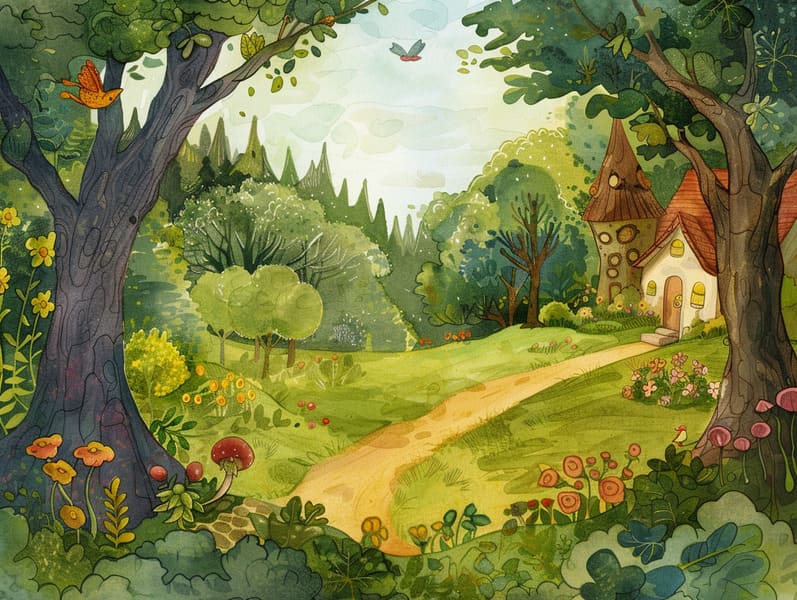A Brief History of Grimm's Fairy Tales and Their Unceasing Magic.
A Brief History of Grimm's Fairy Tales and Their Unceasing Magic.
Blog Article

Classic fairy tales have long histories. These stories have been transmitted from one generation to the next ages before they were ever written down. They arose from a variety of traditions, including Middle Eastern traditions. They were initially shared among elders, often carrying themes and messages relevant to the societal norms and beliefs of the time.
Jacob and Wilhelm Grimm, the two Grimm brothers, were among the first to gather and publish many of these beloved stories. Their compilation, "Grimm's Story Collection," included tales like "Ashenputtel," "Hansel and Grethel," and "Snow White," which have since become mainstays in the world of classic fairy tales. Similarly, the Danish author's whimsical stories, such as "The Story of the Little Mermaid," and "The Duckling's Story," have gained the love worldwide, securing their place in the pantheon of treasured fairy tales.
Even though they are old, traditional fairy tales remain as impactful as ever, especially as kids' bedtime tales. These charming stories are now available in diverse formats, including beautifully illustrated books, charming animations, and free fairy tales online.
Their lasting appeal can be linked to several fascinating points:
Moral Lessons: Timeless fairy tales often convey important moral lessons. Tales like "The Boy Who Cried Wolf" teach the importance of honesty, while "The Hare and the Tortoise" point out the qualities of resolve and humbleness. These narratives offer young ones clear distinctions between ethical and unethical, forming their moral compass in a gentle yet impactful way.
Compassion and Insight: Old fairy tales frequently include figures facing obstacles and hardships, prompting listeners to feel with their struggles and champion their triumphs. For instance, "Beauty's Beast" illustrates the value of looking beyond appearances to acknowledge the true character of a individual, advancing tenderness and understanding.
Cultural Perception: Many classic fairy tales are deeply embedded in the cultural contexts from which they were born. Delving into these fairy tales can provide illuminating insights into different societies, fostering a sense of world insight and acknowledgment.
Imagination and Creativity: The imaginative elements in old fairy tales—talking animals—enhance children’s dreams. These fairy tales take readers to fantastical realms, stimulating fantasy dreams and a sense of fascination that stays a lifetime.
Old fairy tales are not only captivating but also didactic. They function website as bewitching tools in nurturing various cognitive and emotional skills in children. When traditional fairy tales are told out loud, they cultivate verbal development by offering new word meanings and elaborate sentence structures. This practice also promotes auditory skills and attentiveness, as kids track the narrative, looking forward to see what happens next.
Furthermore, discussing the themes and characters of timeless fairy tales can develop intellectual skills and reasoning skills. Children are taught to recognize patterns, predict happenings, and grasp cause and effect. These reflections also further young ones voice their thoughts and feelings, enhancing their emotional intelligence.
In today’s electronic age, the accessibility of free fairy tales online has made these narratives more within reach than ever. Web platforms and online apps offer broad selections of old fairy tales that can be perused or listened to anytime, anywhere. Fairy tales told out loud are particularly widespread, sharing an charming way for children to appreciate these charming tales. Narrated books and read-out-loud stories move characters and settings to life, often supported by whimsical sound effects and musical scores that intensify the narrative journey.
The timeless charm of timeless fairy tales lies in their ability to transform to current times while holding onto their core messages. Contemporary reimaginings of these stories often include more representative protagonists and modern settings, making them accessible to today’s audience. However, the fundamental themes of braveness, charity, and rightness remain unchanged, continuing to touch audiences of all ages.
Fairy tales also offer a sense of calm and recognition. They provide a neat narrative with a plain beginning, middle, and end, often ending with the termination of conflicts and the triumph of honesty over deceit. This foreseeability can be soothing for kids, delivering a sense of dependability in an fluctuating world.
Ancient fairy tales continue to mesmerize and coach new generations, maintaining their attraction and applicability in modern society. As children's night stories, they grant access to a perfect blend of enchantment and education, aiding moral values, empathy, and creativity. The proliferation of internet fairy tales and the prevalence of fairy tales voiced confirm that these timeless narratives remain acquirable to new generations.
By conserving and passing on these stories, we continue to acknowledge the rich tapestry of fantasy and cultural heritage. Whether you are delving into a beautifully illustrated book, accessing a internet collection, or listening to an narrated book, the loveliness of timeless fairy tales is always within reach. These narratives reveal of the endless power of narratives and its ability to unify us across time and space.
Be it you are browsing a gorgeously illustrated book, browsing a electronic collection, or listening on an audio story, the magic of old fairy tales is always within reach.
These tales teach us of the unchanging ability of fairy tales and its ability to bring us together across epochs and places, creating a bond that captivates and teaches alike.